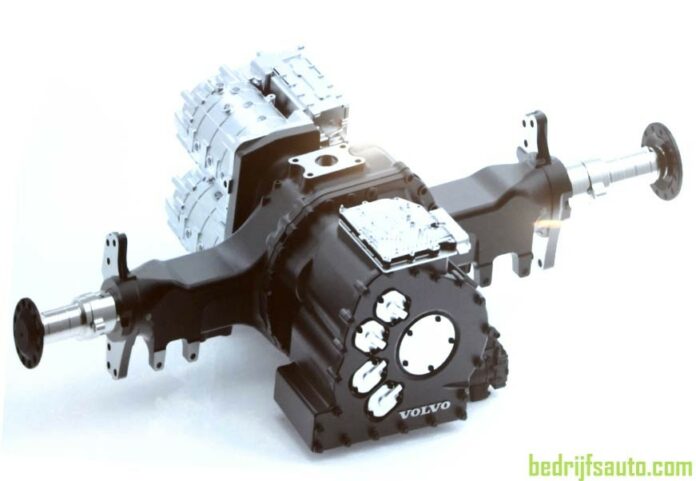Volvo Trucks develops truck axle with electric motor for the new standard international tractor. New invention provides more space for batteries on the truck chassis.
Kars Jol, editor-in-chief
Volvo Trucks introduces an e-axle (electrically powered axle) for trucks. The in-house developed electric motor directly on the axle will be a choice option for buyers of electric trucks.
The e-axle offers several advantages; the most important is that space is freed up on the truck chassis for a centrally placed extra battery. An extra battery pack gives the vehicle a greater range. The central placement of a heavy battery also ensures great straight-line stability.
The Volvo e-axle is suitable for both tractors and truck chassis. It is not suitable for construction chassis due to the lower ground clearance.
The development of electric vehicles is currently going fast. Manufacturers are investing a lot of money in this. Volvo Trucks and sister company Renault Trucks are leading the way in the sales of electric trucks in the Netherlands. Other brands are trying to catch up. In 2023, 404 electric trucks were registered in the Netherlands – all brands together. A pittance compared to the total of 15,140 trucks (over 6 tonnes gvw).
One of the challenges is to develop a tractor that has the same capacity and range as a standard diesel tractor. After all, that is the most sold truck. “The new standard international tractor will ultimately be a 6×2 e-truck, possibly with an e-axle for the drive. With one (fast) charge during the rest break, this e-tractor can cover the usual daily (international) distances.” The third axle is needed to have sufficient capacity on the fifth wheel. The “electric standard truck” will weigh four to five thousand kilos more than the diesel tractor. An example of a truck that comes pretty close to this can be found here: Volvo FH Electric 6×2.
Roeland Ruygt, director of dealership Volvo Group Truck Centre, says that Volvo dealers pay a lot of attention to the charging process when purchasing electric trucks. “Planning and, if necessary, installing a power supply for charging is essential. We often arrange for the customer to purchase charging stations on their premises and to connect them to the power grid. I do not rule out that in the future we will also sell containers with batteries that entrepreneurs can place next to their premises. They can then be charged during the day with solar panels.”
Volvo Trucks wants to sell at least 50% of its trucks “net zero emission” by 2030. That share is currently still below 10%. “We can only achieve this if there are charging plazas for trucks. Hundreds, preferably thousands, throughout Europe.”
From 2050, Volvo Trucks will sell only zero emission equipment. The fuels used will then be electricity, hydrogen and, to a small extent, biogas or synthetic diesel. A hydrogen combustion truck can be bought from around 2029. An electric truck or a truck on biogas now. The electric standard international tractor from 2025. In 2024, Volvo Trucks will focus not only on electric but also on LNG propulsion. They even talk about “reintroducing the LNG truck.” (January 18, 2024)





